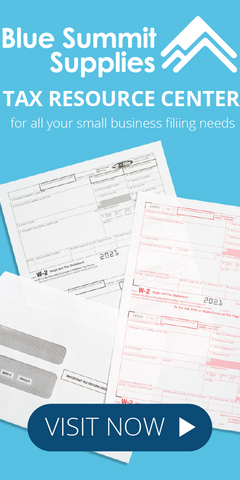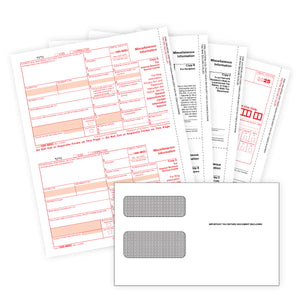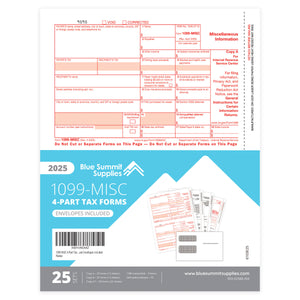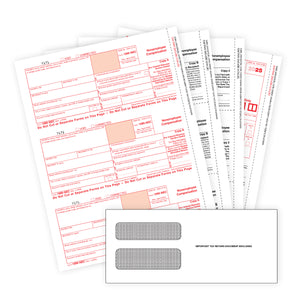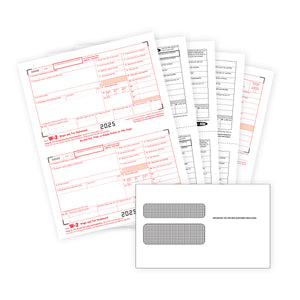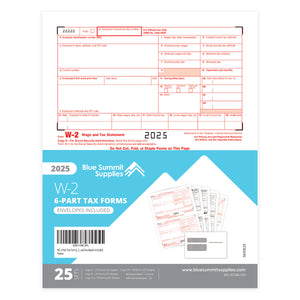The Taxpayer First Act aims to modernize and simplify the way Americans do taxes. The changes affect how the IRS interacts with customers and how the IRS is organized, as well as a number of practical adjustments that could change how your business files its taxes. We’ve pulled together everything covered in the Taxpayer First Act as well as our own summary of what’s most important to business owners.
The Taxpayer First Act
The Taxpayer First Act was signed into law on July 1, 2019. The goal of the Act is to reform the Internal Revenue Service (IRS) by expanding and strengthening the rights of taxpayers and making the IRS more taxpayer-friendly. The IRS is now required to modernize its technology, update its cybersecurity, and develop a comprehensive customer service strategy.
Changes Within the Taxpayer First Act
The IRS breaks down all Taxpayer First Act changes into three categories: Taxpayer Experience, IRS Modernization, and IRS Reorganization. Within each category, a number of changes were approved from important items like prioritizing cybersecurity and improving the taxpayer experience to smaller changes like being able to pay the IRS directly by credit and debit card. Below we’ve compiled lists of all the Taxpayer First Act changes as well as a summary of what’s most important for business owners.

Taxpayer Experience
The changes to taxpayer experience aim to improve the customer service aspects of dealing with the IRS. If you’ve ever needed to contact the IRS for a question or to sort out any issue, this area of focus likely won’t come as a surprise. The changes in the Taxpayer First Act require the IRS to provide the taxpayer with a better customer experience, including increased transparency, assistance programs, and general logistical improvements. In other words, the purpose of the Act is to make doing your taxes and dealing with the IRS less of a headache than it has been in the past.
- Comprehensive customer service strategy
- Low-income exceptions regarding offers-in-compromise
- Taxes collected by private collection agencies
- Notice to taxpayer of IRS contact with third party
- Community Volunteer Income Tax Assistance programs
- Low Income Taxpayer Clinics
- Taxpayer assistance center closures
- Whistleblower Reforms
- Payment of taxes by debit and credit cards
- Misdirected tax refund deposits
💡 You can find additional details about each of the taxpayer experience improvements on the IRS website.

IRS Modernization
Due to the politics around making changes and the pace at which changes are made, the IRS has fallen behind technologically. In an initial effort to catch up with fast-paced technological advances, the Taxpayer First Act aims to modernize the way people, businesses, and the IRS handle taxes. From moving to simpler, more secure online solutions to investing in better cybersecurity, this focus is long-past due.
- Management of IRS information technology
- IRS information technology jobs
- Internet platform for Form 1099 filings
- Electronic filing of returns
- Electronic signatures by taxpayers to authorize action by their practitioner
💡 Learn more about IRS modernization on the IRS website.

IRS Reorganization
The Taxpayer First Act also requires some structural changes of the IRS itself. The changes are meant to improve the way the IRS works with increased transparency for the taxpayer and improved IRS efficiencies. By September 30, 2020, the Treasury Department must submit to Congress a comprehensive plan to redesign the organization of the IRS. The goal is to streamline the structure of the IRS in order to minimize duplicate services and responsibilities. This effort will hopefully make the whole entity more efficient so that IRS workers can focus on helping taxpayers.
- Establishment of IRS Independent Office of Appeals
- IRS organizational structure
💡 Find out more about IRS reorganization changes on the IRS website.
What Does it Mean for Business Owners?

Customer Service Improvements
The Taxpayer First Act requires the IRS to start treating the taxpayer as a business would treat a customer, with an emphasis on good customer service. The Act requires the IRS to develop a comprehensive strategy for customer service and deliver it to Congress by July 1, 2020, one year after the Act was signed into law. The strategy must include meeting reasonable customer expectations, updating guidance, as well as general long-term and short-term improvements to their treatment of the taxpayer.

Cybersecurity and Identity Protection
The Taxpayer First Act aims to reduce the cases of identity theft and tax refund fraud through increased information sharing between both private sector and state partners. In order to reduce identity theft, the IRS will make it easier for customers to access identity protection personal identification numbers. In order to combat tax-related theft, the IRS is establishing a single point of contact, so victims won’t be transferred from department to department in their time of need.
This focus on security is critical to all business owners and individuals. We hope to see the IRS continue to expand on cybersecurity measures in the years to come.

IT Updates and Technology Improvements
The Taxpayer First Act requires the IRS Commissioner to appoint an IRS Chief Information Officer (CIO). It will be the responsibility of the IRS CIO to develop, apply, and preserve information technology (IT) systems for the IRS. The Act aims to modernize the IRS’s IT systems since they have fallen behind much of modern technology.

Independence of the IRS Office of Appeals
The Taxpayer First Act directs the IRS to create an Independent Office of Appeals. It’s meant to assure taxpayers that review of their taxes will be more independent. The IRS can still discuss cases with the IRS Chief Counsel’s Office, but the Act stresses that attorneys who were involved with the case before it went to appeal should not be involved in the appeals process. It also states that taxpayers can access case files and establishes the right of taxpayers to protest if the IRS denies their right to appeal. With the Act, taxpayers, including small business owners, are able to fight an IRS position without being saddled with all the costs that can come from a court battle.

Expanded Electronic Filing and Payments
The Taxpayer First Act will expand electronic filing and payments in an effort to improve the efficiency of filing taxes. Efiling saves time as there’s no printing forms, filling them out by hand, or going to the post office. It saves the IRS time as well since they don’t need to spend time transcribing returns into their system.
Efiling is also more accurate and secure. With paper filing, there’s more room for human error on both sides of the process, and compared to sending returns through the postal service, an encrypted network provides more security.
The Taxpayer First Act requires that more businesses file taxes electronically. Starting in 2020, taxpayers filing 250 or more tax information returns will be required to file electronically. This number is reduced to 100 in 2021, and 10 in 2022. In the case of partnerships, the limit is 150 in 2019, 100 in 2020, and 50 in 2021.
The Taxpayer First Act will also require tax-exempt organizations to file Form 990 electronically for taxable years starting after July 1, 2019. Small tax-exempt organizations—those with annual gross receipts of less than $200,000 and gross assets of less than $500,000—will need to file Form 990 electronically starting after July 1, 2021.
E-file Resources
- In our guide to efiling your taxes, we answer all of your questions about e-filing.
- Blue Summit Supplies E-file Website: Our quick, easy efiling platform makes it simple to fill, print, mail, and e-file both 1099 and W2 forms all in one place.


